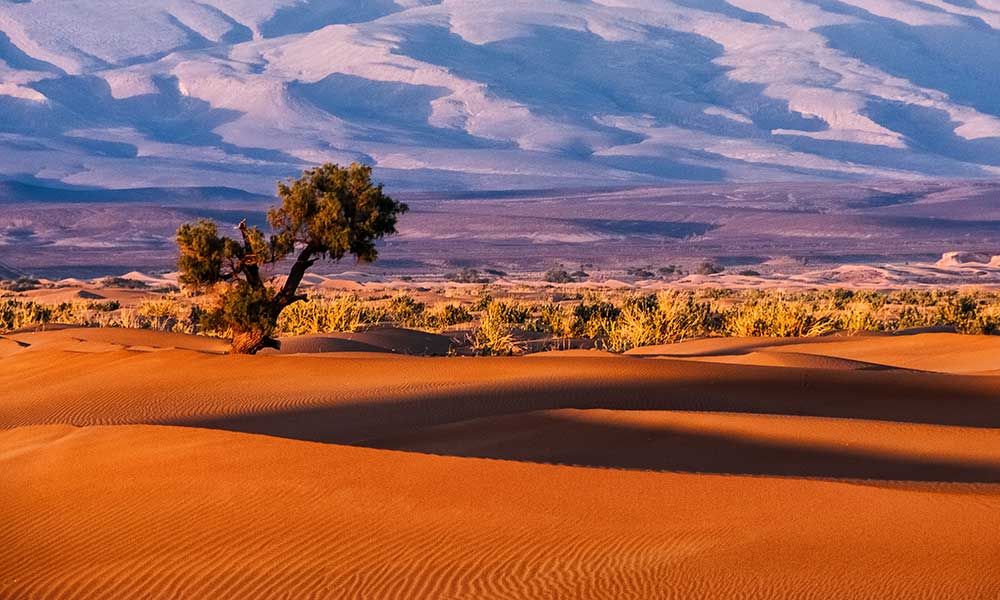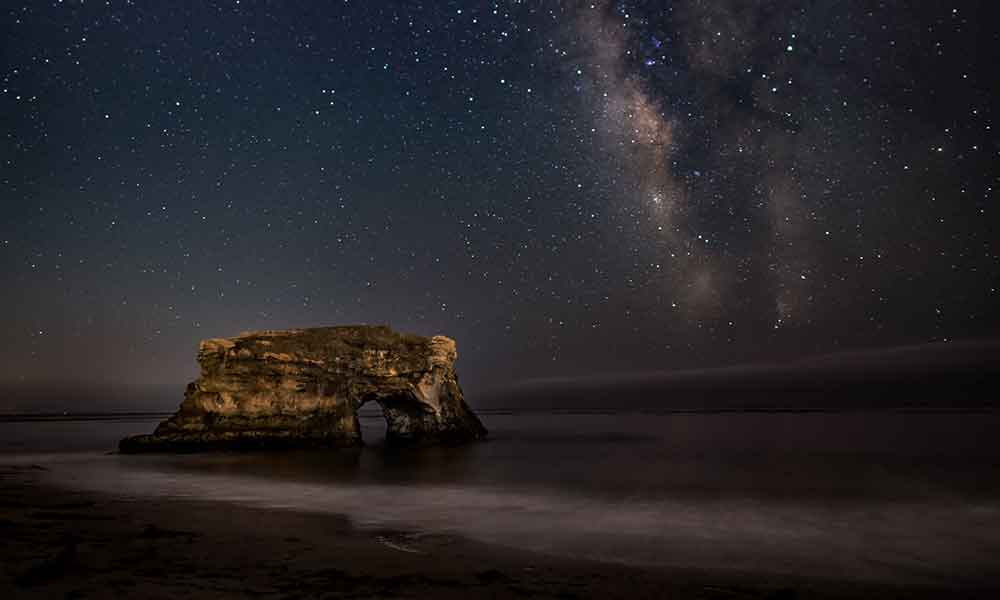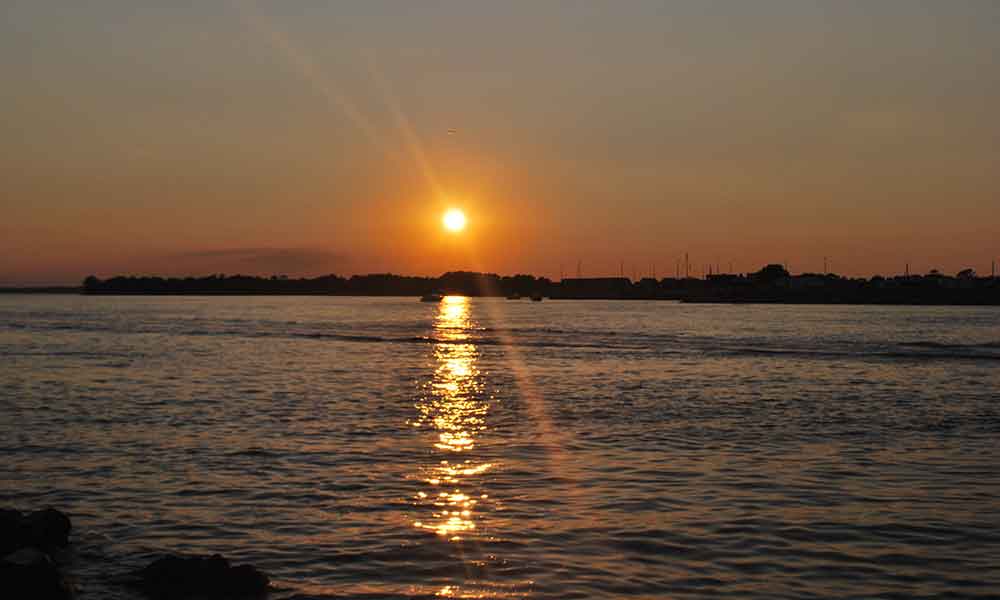There are four major deserts in North America, as well as many smaller ones. These areas of land are defined by having less than 10 inches of rainfall per year and most of America’s deserts are situated between the Sierra, Peninsular Ranges, and Transverse in the west and the Rocky Mountains and the Sierra Madre Oriental in the east.
What are the Major Types of Deserts?
There are four types of deserts: Hot and dry deserts, coastal deserts, cold deserts, and semi-arid deserts.
Hot and Dry Deserts
As the name suggests, these types of deserts are very hot and dry and they remain that way whenever the sun is shining. At night, temperatures can plummet to below freezing and there is very little precipitation to provide any respite.
Hot and dry deserts don’t support much life. Not only is there very little water, but the ground tends to be coarse and gravelly. It’s also exposed to huge amounts of solar radiation.
Coastal Deserts
Coastal deserts are vast stretches of land next to bodies of water, including oceans. They have hot summers (albeit not as intense as hot and dry deserts) and cool winters.
These types of deserts get very little rainfall, but they support more animal life than other desert types.
Cold Deserts
Also known as polar deserts, cold deserts include both the Arctic and Antarctica. These are the largest deserts in the world.
Cold deserts are covered in snow and ice, as opposed to sand, and they experience freezing temperatures all year round. They can receive as much as 18 inches of rain every year, but most of the time the average stays below 10 inches.
Semi-Arid Deserts
Also known as cold-winter deserts, these deserts are hot and dry, but the temperatures don’t reach the same heights as hot and dry deserts.
Types of Deserts in North America
There are three major hot and dry deserts in North America and one cold desert. These deserts are much more than hot, dry, and lifeless stretches of land and actually contain thousands of different species of plants, insects, birds, and mammals.
The Great Basin Desert
The Great Basin Desert is a cold desert that spans a large part of the state of Nevada and also extends into California, Idaho, and Utah. It experiences hot summers and cold winters and is home to over 100 species of mammal and more than 200 species of bird.
The Great Basin Desert contains over 33 peaks, as well as lots of high valleys.
This vast cold desert is home to many smaller deserts, including:
Forty Mile Desert
- Location: Nevada
- Size: 64 km
- Elevation: 3934 ft. (1199 m)
Smoke Creek Desert
- Location: Nevada
- Size: 97 km
- Elevation: 3,852 ft (1,174 m)
Carson Desert
- Location: Nevada
- Size: 2,150 sq mi (5,600 km2)
Great Salt Lake Desert
- Location: Utah
- Size: 4,000 sq mi (10,000 km2)
- Elevation: 4,250 feet
The Sevier Desert
- Location: Utah
- Size: 97km – 169km
- Elevation: 4600 feet (1402 meters)
Escalante Desert
- Location: Utah
- Size: 3,270 sq mi (8,500 km2)
- Elevation: 5,700 ft (1,737 m)
The Mojave Desert
Named for the indigenous Mojave people, the Mojave desert covers parts of California, Nevada, Utah, and Arizona. This hot and dry desert is the smallest of all the four major deserts in the United States.
It is one of the most well-protected deserts in the country, but its wildlife has been impacted by the expansion of suburban centers in Los Angeles and Las Vegas.
Millions of tourists pass through this hot and dry desert every year, with many flocking to the city of Las Vegas, located in a basin on the desert floor. The Mojave Desert is also home to Joshua Tree National Park and Death Valley National Park.
Sonoran Desert
The Sonoran desert is a hot and dry desert that spans large parts of the southwestern United States and also extends into northwestern Mexico.
The Sonoran covers over 100,000 square miles and plays host to more than 350 species of animals. There are also more than 2,000 native plant species in this desert.
Some of the subregions of the Sonoran desert include:
Colorado Desert
- Location: California
- Size: 7 million acres (2,800,000 ha; 28,000 km2)
- Elevation: 1,000 feet (305 m)
Gran Desierto de Altar
- Location: Mexico
- Size: 2,200 square miles (5,700 square kilometers)
- Elevation: 1,206 meters (3,957 ft)
Baja California Desert
- Location: California
- Size: 30,000 square miles (77,700 square kilometers)
- Elevation: 3,300 to 4,900 feet (1,000 to 1,500 meters)
Vizcaíno Desert
- Location: California
- Size: 21,450 square miles (55,555 square kilometers)
Chihuahuan Desert
The Chihuahuan desert covers parts of northern Mexico and the southwestern United States, including the Mexican state of Chihuahua, for which it is named.
The area of the Chihuahuan desert covers more than 190,000 square miles, making it the largest desert in North America.
Other Deserts in North America
In addition to the major deserts mentioned above, there are many smaller deserts, some of which are located in and around the major deserts:
Carcross Desert
- Location: Yukon, Canada
- Size: 640 acres (1 sq. mile)
- Elevation: 2,161 ft
Channeled Scablands
- Location: Washington
- Size: 1,500 and 2,000 square miles (3,900 and 5,200 km2)
- Elevation: 656m / 2152feet
Craters of the Moon National Monument and Preserve
- Location: Idaho
- Size: 1,117 square miles (2,893 km2)
- Elevation: 5,900 feet (1,800 m)
San Rafael Swell
- Location: Utah
- Size: 75 by 40 miles (121 by 64 km)
- Elevation: 6,909 ft (2,106 m)
Bisti Badlands Wilderness
- Location: New Mexico
- Size: 45,000-acre
- Elevation: 6,450 feet
Painted Desert
- Location: Arizona
- Size: 7,500 square miles (19,420 km2)
- Elevation: 1758m / 5768feet
Red Desert
- Location: Wyoming
- Size: 9,320 square miles (24,100 square kilometers)
- Elevation: 5,000-9,500 ft (1,524 to 2,896 m)
Y P Desert
- Location: Nevada
- Elevation: 1616 meters to 5302 feet
Alvord Desert
- Location: Oregon
- Size: 12-by-7-mile (19 by 11 km)
- Elevation: 4,000 feet (1,200 m)
What is the World’s Largest Desert?
The Antarctic polar desert is technically the largest desert on earth. It’s probably not what you picture when you think of deserts, but it meets the criteria. The Arctic polar desert is a close second.
If we’re talking about hot and dry deserts. the Sahara desert is number one. It spans over 3.5 million square miles and covers most of North Africa.
The Arabian Desert is next on that list, followed by the Gobi Desert. All of these are bigger than the biggest desert in North America, as are the following deserts:
- Patagonian Desert: The largest desert in South America.
- Great Victoria Desert: The largest desert in Australia.
- Kalahari Desert: Over 350,000 square miles of land in southern Africa.
Summary: The Different Types of Deserts in the United States
Deserts may seem a little inhospitable, but humans have thrived in these environments for thousands of years.
Most of the land that the ancient Egyptians called home was barren desert, and before them, the Sumerians also found a way of adapting extreme heat and minimal rainfall to their advantage. Today, it is estimated that over a billion people live in desert conditions—it makes sense when you consider that deserts cover a fifth of the globe’s landmass!
Even in North America, there are millions of people who live in dry deserts, and countless others who live near to these hot and dry regions.
There’s clearly a lot more to these regions than most people realize.







